We're living in the age of AI everything, from chatbots that help you plan dinner to algorithms that curate your morning playlist. Language learning hasn’t escaped this trend either, with countless language apps promising to revolutionize how we pick up new languages through artificial intelligence.
However, let me be clear: Not all AI is created equal! In fact, some are so bad with their implementations that they can actually hurt your progress more than help it.
Beelinguapp often gets mentioned as one of the leading AI-powered language learning tools, so I decided to put it through its paces over the past few months. What I found was a mixed bag of genuinely useful features alongside some AI-powered elements that left me saying "huh?" a few times.
In this review, I'll walk you through what works, what doesn't, and whether Beelinguapp deserves a spot on your phone when so many other options are competing for your attention.
- Qlango Review: Still Worth Using Or Totally Obsolete?
- Talkpal AI Review: Fluent in 3 Months? Not Even Close!
- Memrise Review: Is It Worth Trying Out?
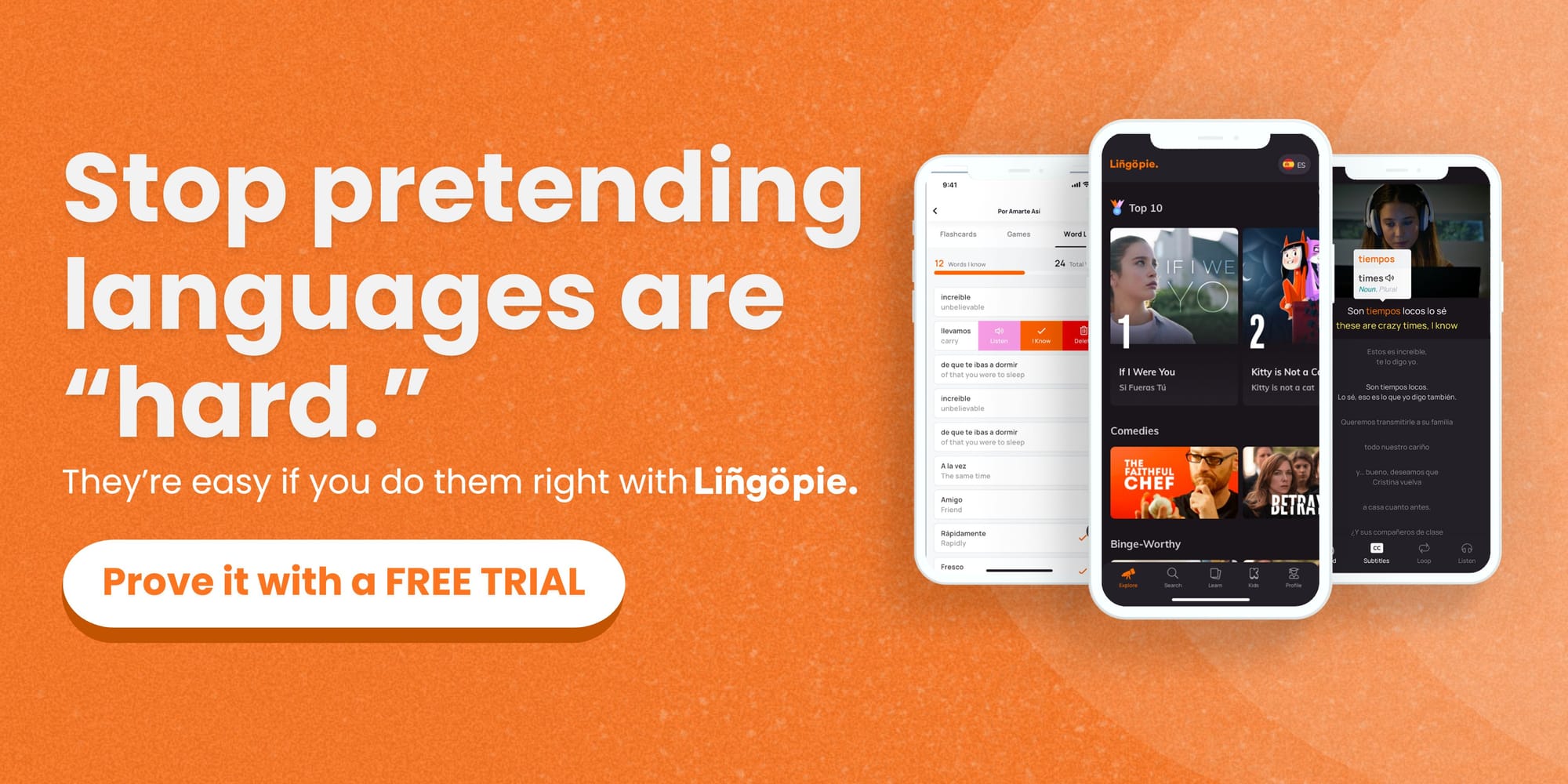
What Is Beelinguapp?
Beelinguapp is a mobile language learning app that lets you read stories and articles in your target language while having the English translation right next to it. The app was launched in 2017 by David Montiel and works around two main features called "Side by Side Reading" and "Karaoke Reading." The side-by-side feature splits your screen to show both languages simultaneously, while the karaoke mode adds audio narration with text highlighting that follows along as the story is read aloud.
The concept is genuinely appealing since you’re consuming actual content like news articles, fairy tales, and short stories. I appreciate that Beelinguapp also doesn’t try to gamify everything or throw badges at you every five minutes.
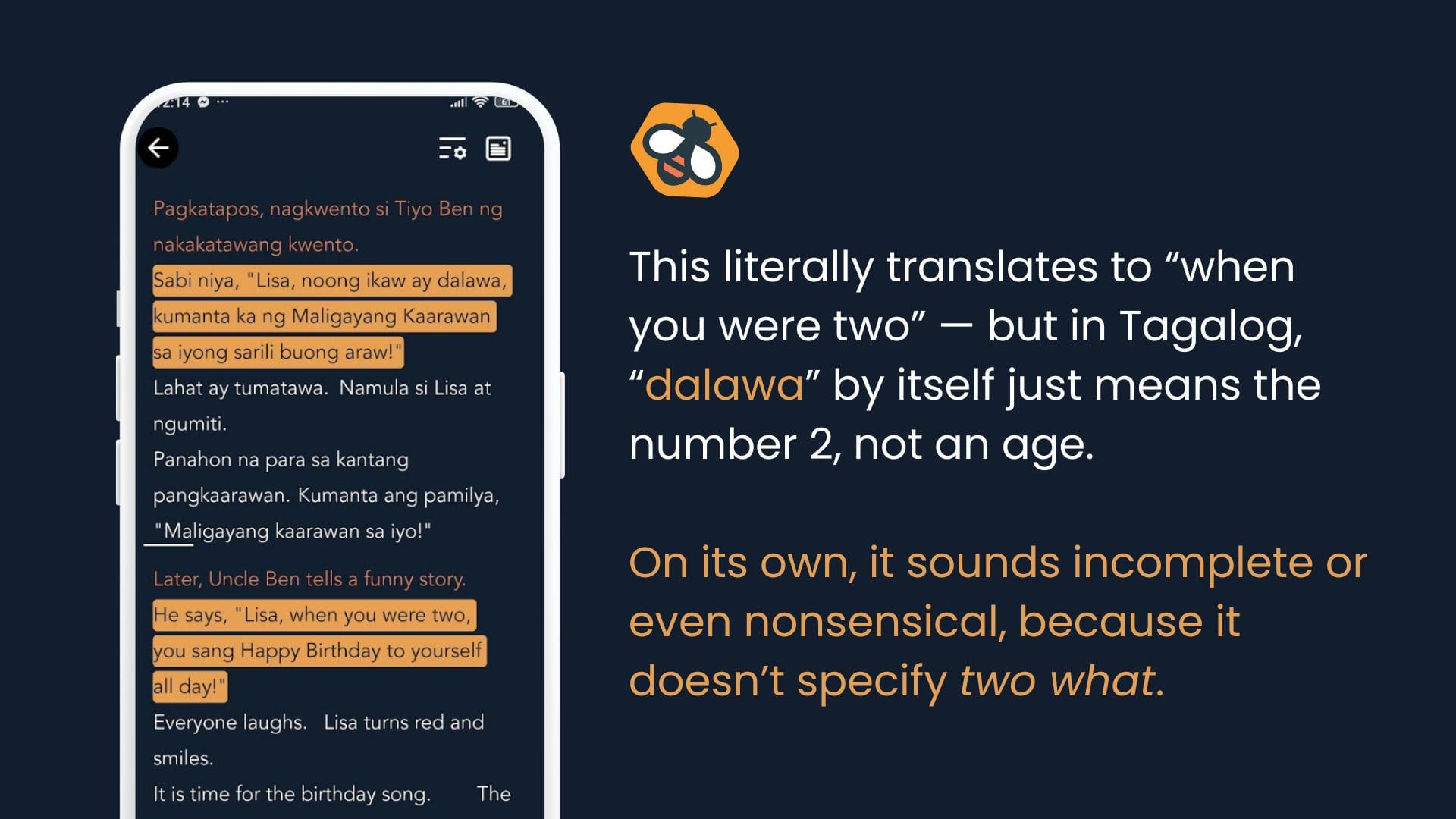
However, after spending time with the app, I've noticed that while the core idea works well, some of the AI-powered features feel underdeveloped. The robotic AI-generated voice often mispronounces words, which can actually teach you incorrect pronunciation patterns. The translations are also somewhat off at times, making the side-by-side comparison less reliable than it should be for effective learning.
How Does Beelinguapp Work?
To understand how the Beelinguapp works, you'll need to create an account. After creating an account, you'll choose from 23 available languages you want to learn. The app gives you a short demo showing how the side-by-side reading works, then asks you to select categories that interest you. I went with culture, cinema, and customs and traditions, though there are several other options available.
Next, you'll set your reading goal. Beelinguapp offers three levels: Basic (1 to 3 stories per week), Regular (4 to 6 stories), or Serious (7 to 10 stories). Once that's done, you land on the main dashboard where you can either follow their guided journey through lessons or jump straight into the library.
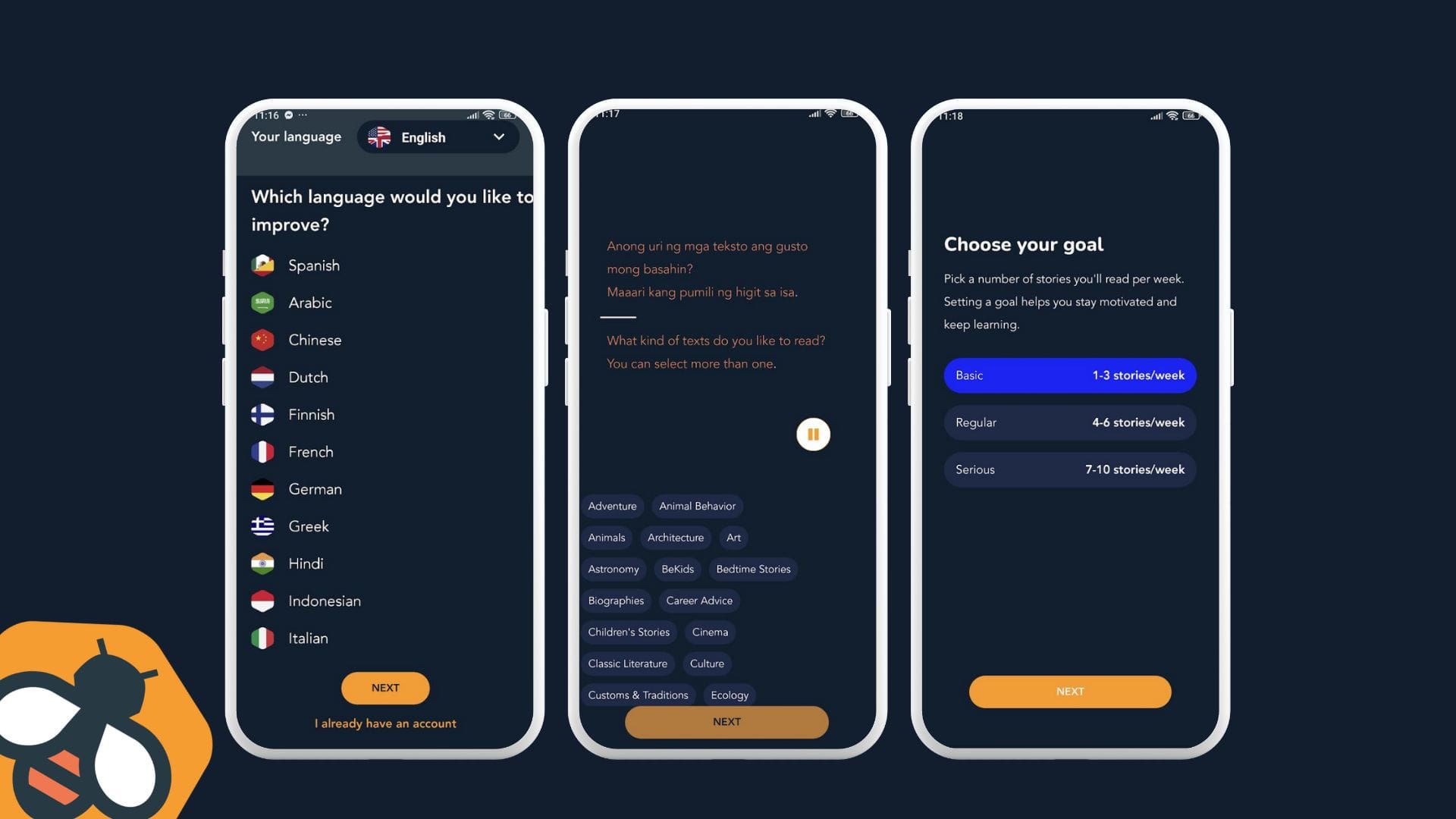
The library shows reading challenges and all available audiobooks, though I noticed some of the content looks AI-generated rather than authentic materials. When you select a book, you get a landing page showing key vocabulary and options to read or download.
If you encounter new words while reading, you can add them to your personal glossary and turn them into flashcards. Beelinguapp also includes local music with lyrics. But surprise, surprise! The songs aren't actually popular local tracks. When I checked the Tagalog course, there weren’t any Tagalog songs at all, which defeats the whole purpose of learning through authentic cultural content.
What I Liked About Beelinguapp
Specializes In Reading And Listening
Beelinguapp focuses specifically on reading and listening skills instead of trying to cover everything. This narrow approach works well because you can just focus on stories without being interrupted by random grammar exercises or speaking prompts. I could get into a real flow state while reading, which rarely happens with other language apps constantly switching between different activities.
That said, I do wish there were some basic speaking or writing exercises to round out the experience, since reading and listening alone won’t make you conversational.
Dual Language Reading

The side-by-side reading feature is honestly brilliant when it works well. Having the English translation right there means you never get completely lost in a story, which motivated me to continue reading even when I hit challenging passages. I found myself naturally comparing sentence structures between languages, which helped me understand grammar patterns without explicit instruction.
There were moments where I'd read the target language first, then glance at the English only to confirm my understanding was correct. That feeling of gradual independence from the translation is genuinely satisfying.
Tests Comprehension
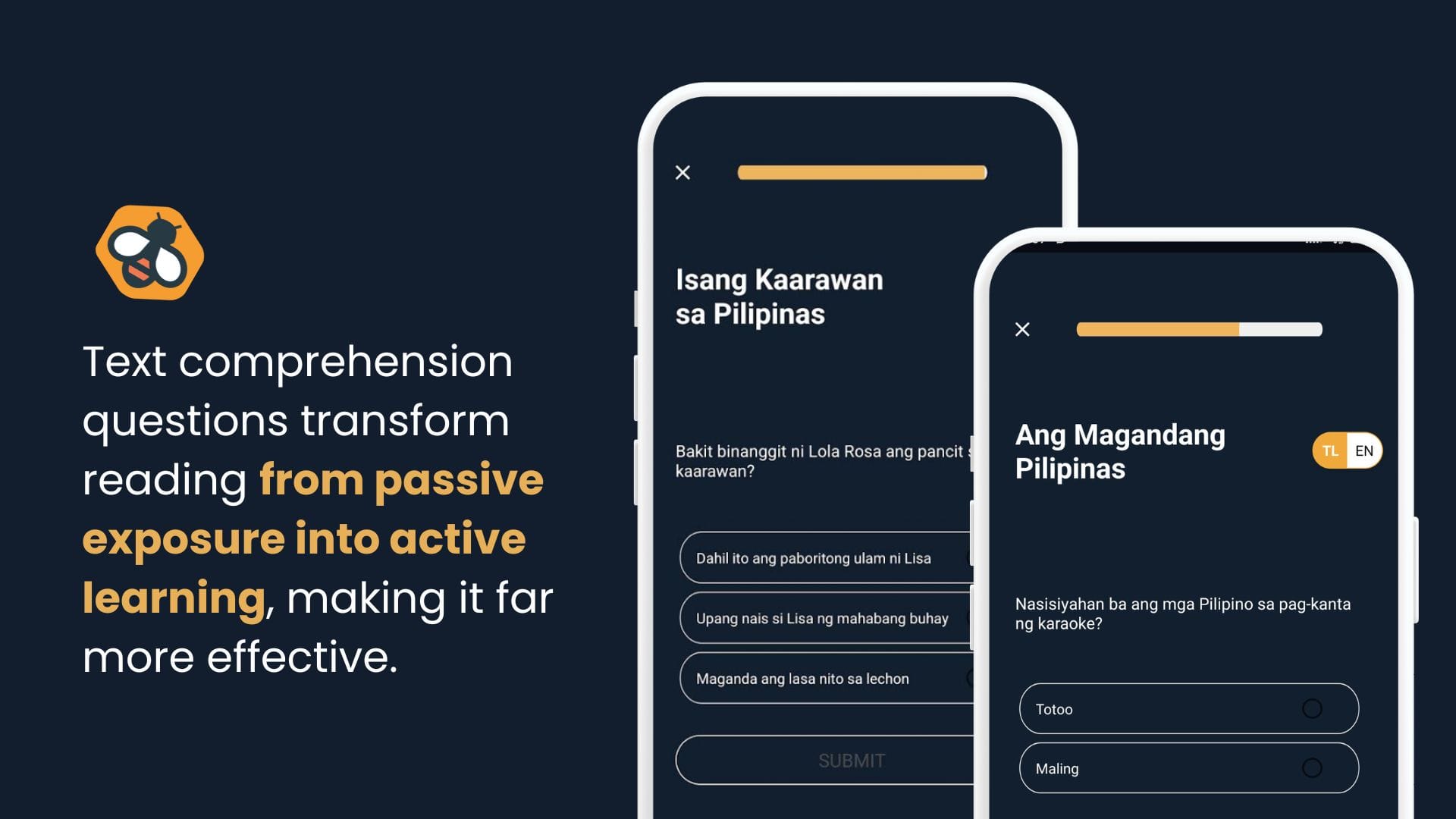
The comprehension questions focus on whether you actually understood the story, which is refreshing. Most language apps test you on isolated vocabulary words or grammar rules, but Beelinguapp asks about plot points, character motivations, and story details. This approach feels much more natural because it mirrors how we actually engage with content in real life.
When I couldn’t answer a question about what happened in the story, it made me realize I'd been passively following along rather than truly comprehending. These questions forced me to engage more actively with the material.
What Should Be Improved
Incorrect Translations
The translation quality is honestly concerning for a language learning app. I noticed multiple errors in the Tagalog course that would confuse rather than help learners. For example, "totoo" and "maling" appeared when they should have been "tama" or "mali."
Even worse, "leche flan," which is a popular Tagalog dessert, was bizarrely translated to "flan leather." That makes absolutely no sense and shows a fundamental misunderstanding of the language. I also caught "pancit" being changed to "panic," which is just embarrassing for an app that's supposed to teach accurate language use.
Grammatically Incorrect Sentences
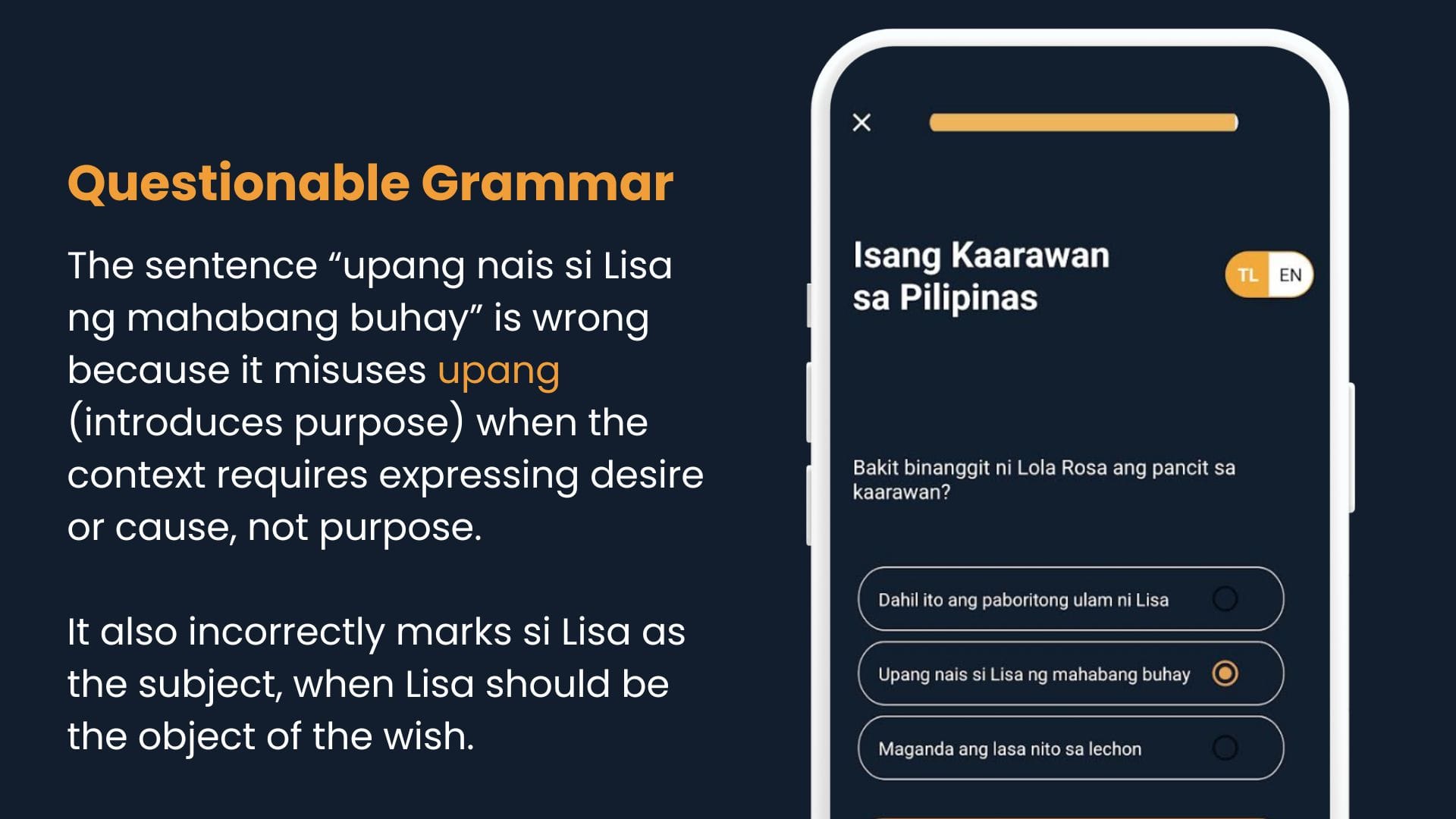
Beyond individual word errors, I found sentences that were structured incorrectly or used awkward phrasing that no native speaker would actually say. This is particularly problematic because learners might internalize these mistakes as correct usage. When you're relying on an app to teach you proper language patterns, getting fundamentally wrong examples defeats the entire purpose.
If you ask me, I think the only solution here is to hire qualified linguists and native speakers to review all content before publication. Beelinguapp could also partner with language schools or universities to ensure their materials meet educational standards. Quality control shouldn't be optional for a language learning platform.
AI Pronunciation
The robotic AI voices often mispronounce words, especially in less common languages. This creates a serious problem because pronunciation is crucial for language learning. If you're following along with incorrect pronunciation, you're essentially training yourself to speak incorrectly from the start. Some words were so poorly pronounced that I had to look them up elsewhere to hear how they should actually sound.
Beelinguapp needs to invest in higher-quality text-to-speech technology or, better yet, hire native speakers to record the audio. Many successful language apps use human narrators for exactly this reason. Even if it costs more upfront, accurate pronunciation is essential for effective language learning.
Lack Of Explanations
Beelinguapp throws you into stories without explaining grammar patterns, cultural context, or why certain phrases work the way they do. While immersion can be valuable, some guidance would help learners understand what they're absorbing rather than just hoping comprehension happens naturally.
Adding optional grammar notes or cultural context boxes would enhance the learning experience without disrupting the reading flow. Beelinguapp could include expandable sections that explain idioms, cultural references, or grammatical structures for learners who want deeper understanding.
Uninspiring Games
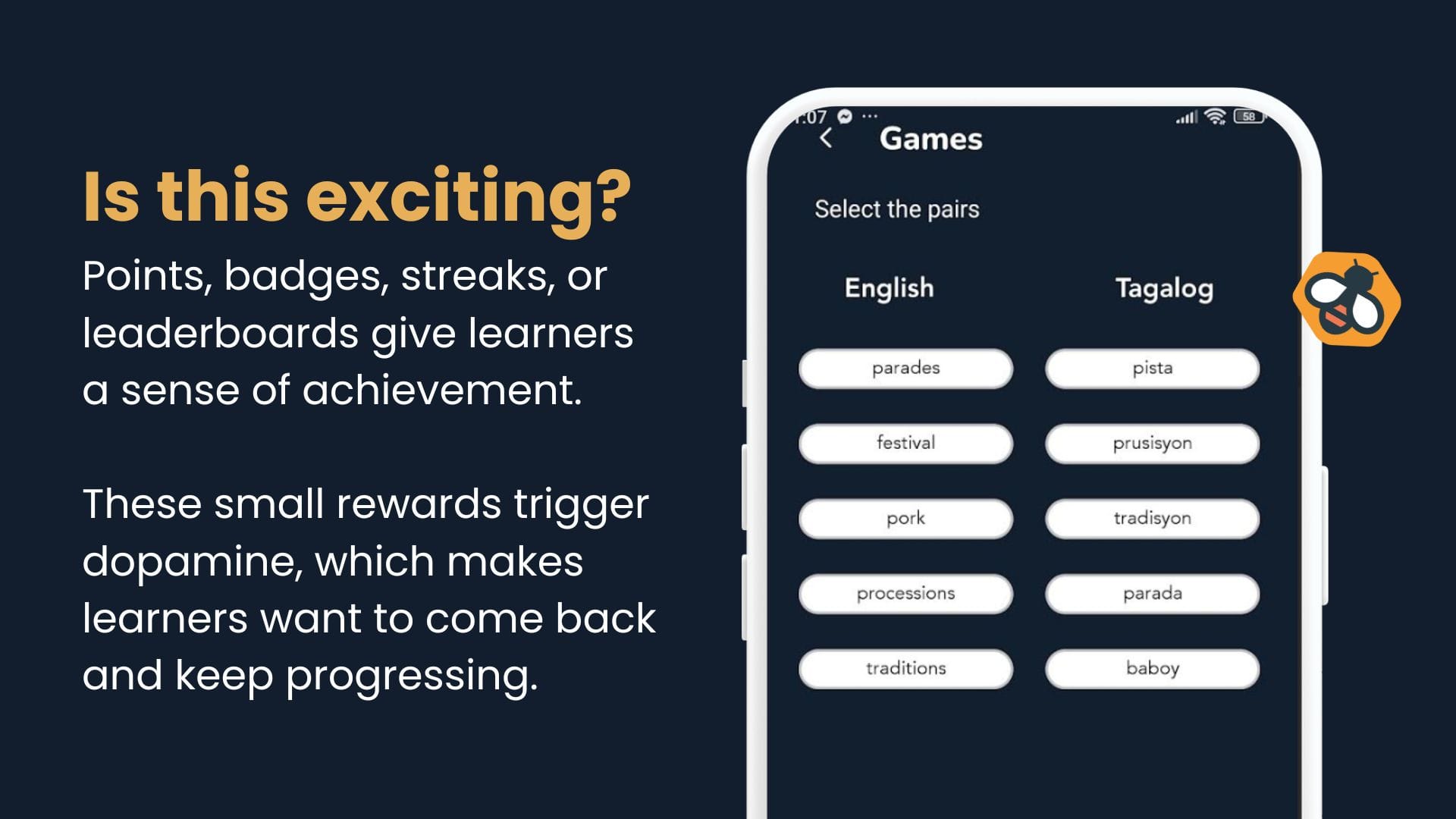
The word games feel like basic practice exercises rather than actual games. There's no excitement, progression, or rewards that make you want to keep playing. They're just simple matching exercises that feel more like homework than entertainment. Calling them "games" is misleading when they lack any gamification elements.
Beelinguapp should either properly gamify these activities with points, levels, and engaging mechanics, or simply rebrand them as "practice" or "review" sections. If they want to keep calling them games, they need to add elements that actually make them fun and motivating to complete.
Not For Total Beginners
If you're completely new to a language, Beelinguapp will likely overwhelm you. The app assumes you have at least some basic vocabulary and familiarity with the language structure. True beginners would benefit from more foundational lessons before jumping into full stories.
Beelinguapp Review: Yay Or Nay?
Nay, especially for serious learners.
The concept of reading stories while having translations side-by-side is genuinely useful, and I appreciated being able to focus on reading and listening skills without constant interruptions from other activities. The comprehension questions also test actual understanding rather than just isolated vocabulary, which feels more natural and effective.
However, the problems are hard to ignore. The translation errors, grammatical mistakes, and poor AI pronunciation create real barriers to learning. When an app teaches you that "pancit" means "panic" or that "leche flan" translates to "flan leather," it's actively working against your language progress.
Beelinguapp Vs Other Apps
If Beelinguapp fixes their translation accuracy and improves their AI voices, it could become worthwhile, but right now the cons outweigh the pros. Save your time and money for language apps that actually help you learn correctly.
Beelinguapp Vs Lingopie
Lingopie offers both TV shows/movies and short stories with dual subtitles, making it a more versatile platform than Beelinguapp's text-only approach. The story content on Lingopie tends to be higher quality with better translations and authentic audio from native speakers rather than robotic AI voices.
Lingopie's dual subtitle feature works similarly to Beelinguapp's side-by-side reading but extends to video content as well, giving you more learning options. The interactive subtitles and vocabulary tools also feel more polished and reliable than Beelinguapp's basic setup. The pronunciation quality alone makes Lingopie worth choosing over Beelinguapp, especially since you won't encounter embarrassing translation errors.
Beelinguapp Vs Yabla

Yabla shares some similarities with Beelinguapp in offering dual-language content, but focuses on video materials like music videos, documentaries, and interviews with real native speakers. The content quality on Yabla is consistently higher because it features authentic materials rather than potentially AI-generated stories. Yabla also provides a better cultural context since you're seeing real situations and conversations.
If you want authentic pronunciation and cultural immersion, Yabla is the clear winner, but Beelinguapp works better for learners who specifically want to improve reading skills.
Beelinguapp Vs Migaku

While Lingopie represents the gold standard for content-based language learning, Migaku comes in as a second strong choice. Migaku offers vocabulary tools with spaced repetition and context-based flashcards compared to Beelinguapp's basic glossary feature. The quality control is also better since you're learning from authentic materials rather than questionable translations.
Beelinguapp's only advantage is simplicity since it doesn't require you to find your own content, but this convenience comes at the cost of quality and authenticity.
So, What’s Next?

After thoroughly testing Beelinguapp, I can't recommend it as a reliable language learning tool. While the dual-language reading concept has potential, the execution is riddled with translation errors, poor AI pronunciation, and quality control issues that can actually harm your language progress.
If you're looking for a content-based language learning experience, I'd strongly suggest trying Lingopie instead. It offers the same dual-language approach but with significantly better quality control, authentic audio from native speakers, and both video and text content options. You'll get the immersive reading experience you're looking for without the frustrating errors that plague Beelinguapp.
Your time is valuable, and language learning requires accuracy to be effective. Save yourself the headache of unlearning incorrect information and choose a platform that actually helps you progress. Lingopie delivers what Beelinguapp promises but fails to execute properly.


![Beelinguapp Review: Proof That Bad AI Can Wreck Language Learning [2026]](/blog/content/images/size/w1200/2025/08/Memrise-review--1-.jpg)





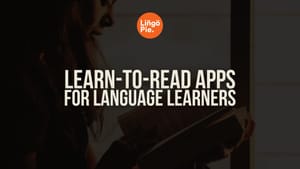
![Language Reactor Review: Why Lingopie Is The Better Choice for Language Learning [2026]](/blog/content/images/size/w300/2024/12/Language-Reactor-Review.jpg)